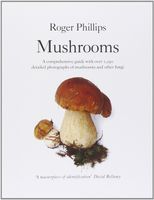Advertisement
What is a Mushroom?
Appears in
Published 2006
A mushroom, or indeed any fungus, is only the reproductive part of the organism (known as the fruit body), which develops to form and distribute the spores. Fungi are a very large class of organisms which in their structure have some similarities to plants, but they lack chlorophyll and are thus unable to build up the carbon compounds essential to life. Instead, they draw their sustenance ready-made from living or dead plants or even animals, as animals do.
A fungus is made up of minute, hair-like filaments called hyphae. The hyphae develop into a fine, cobweb-like net, known as the mycelium, and grow through the material from which the fungus obtains its nutrition. Mycelium is extremely fine and, in most cases, cannot be seen without the aid of a microscope. In other cases, the hyphae bind together to make a thicker mat, which can readily be observed. To produce a fruiting body, two mycelia of the same species band together in the equivalent of a sexual stage. Then, given the right conditions of nutrition, humidity, temperature and light, a fruit body will be formed and, with sufficient water, expand into a mushroom or fungus.

